
Aotus ericoies
The low bushes are densely packed with bright yellow blooms. Each branch carries flowers at various stages of development, from unopened buds to developing fruit.

Small butterflies steal nectar without coming into contact with the flower’s pollen.
Zizina otis (family: Lycaenidae)
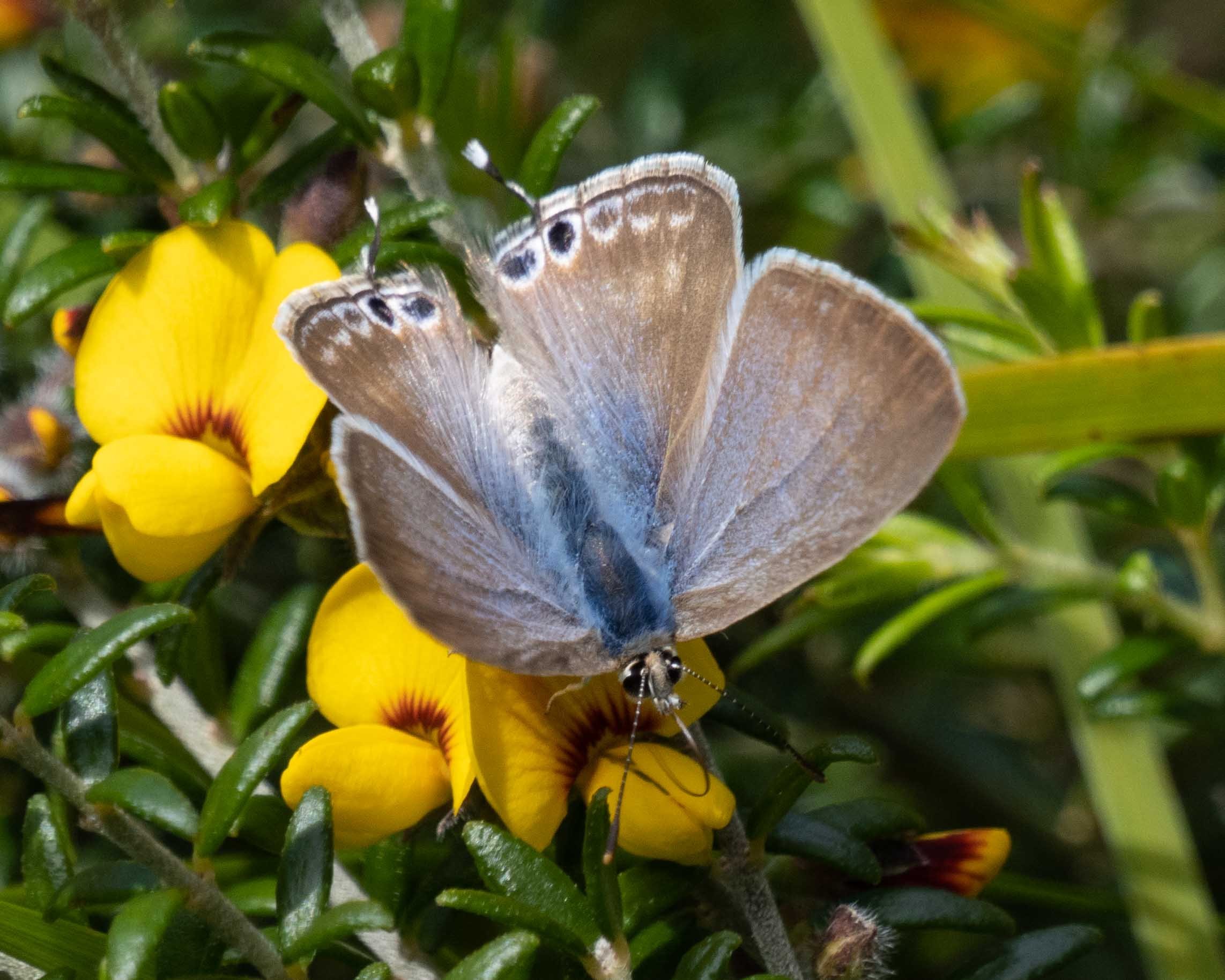
Feeding butterflies tend to perch on the standard, not the wings and keel. The long, fine proboscis probes deep into the flower to where the nectar is concealed.
Lampides boeticus (family: Lycaenidae)
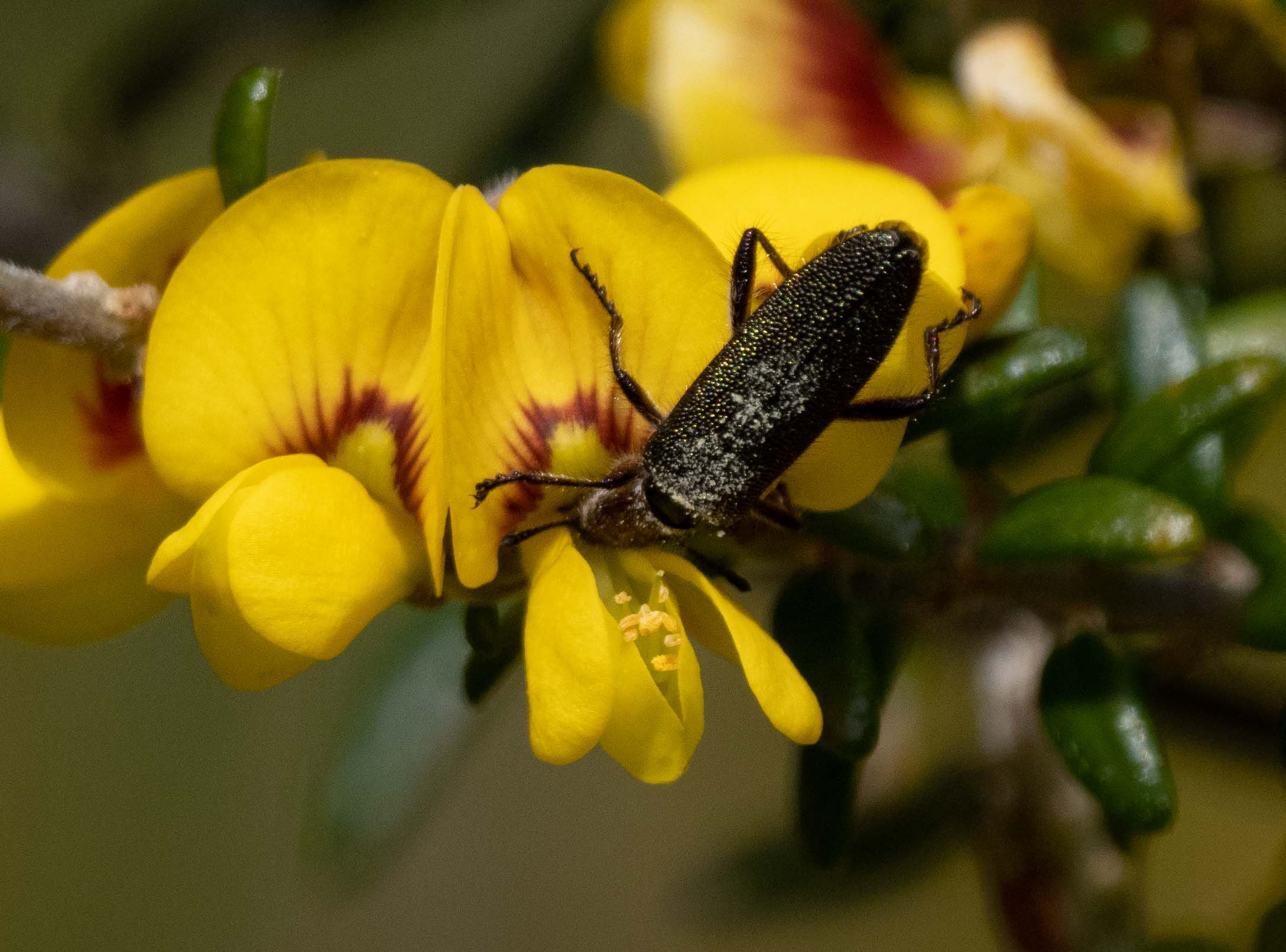
Beetles occasionally force their way in toward the nectar – and may expose the pollen in the process.
Eleale sp. (family: Cleridae)
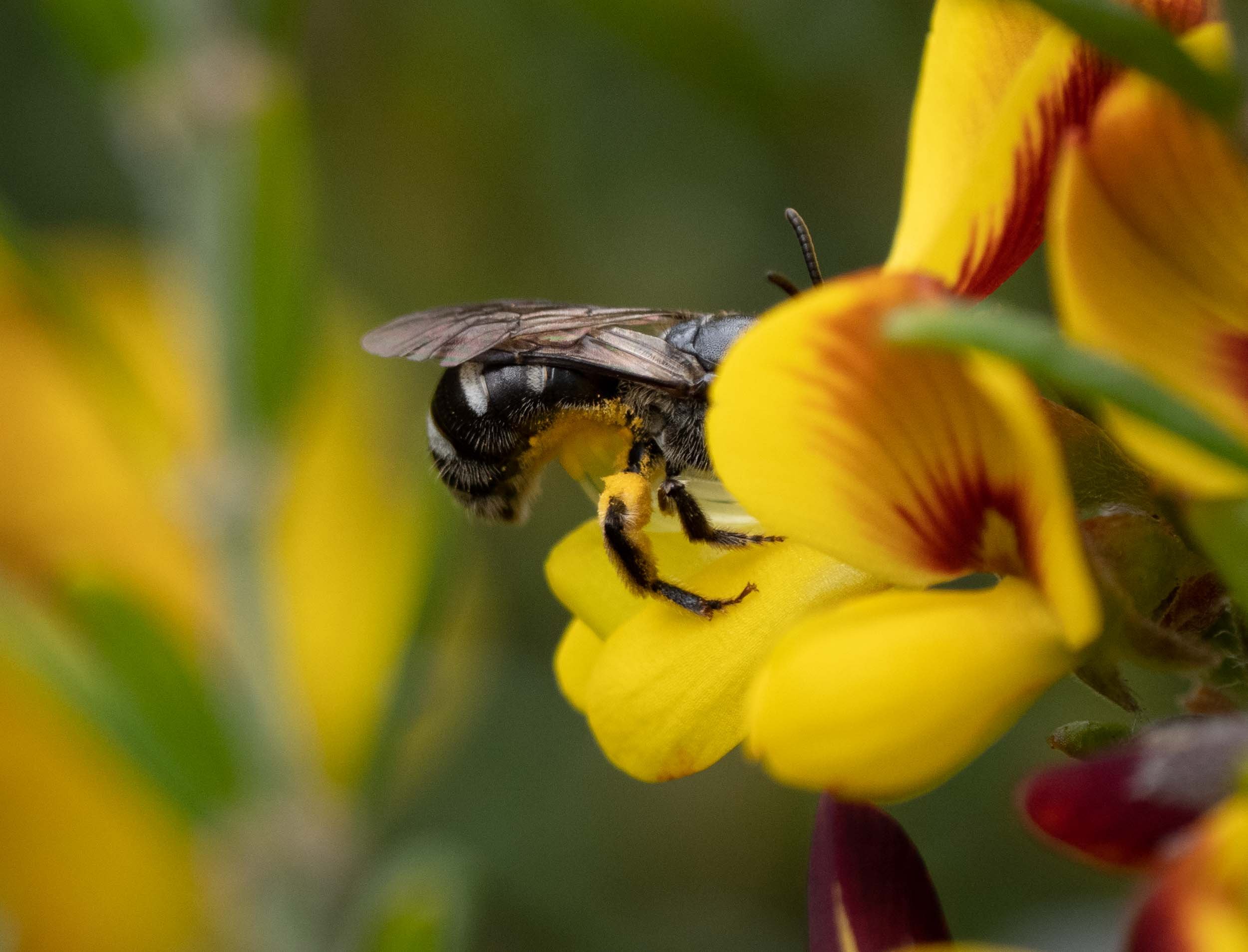
Bees are by far the most frequent visitors to the flowers, and they take a stereotypic stance in order to access the nectar … astride the wings and keel.
Lasioglossum (family: Halictidae)

Although one of the larger species of Exoneura we see here in the forest, this reed bee is still quite small. They are generalists. Large numbers of Exoneura were feeding on Leucopogon (family: Ericaceae) when it was flowering a few weeks ago.
Exoneura sp. (family: Apidae)
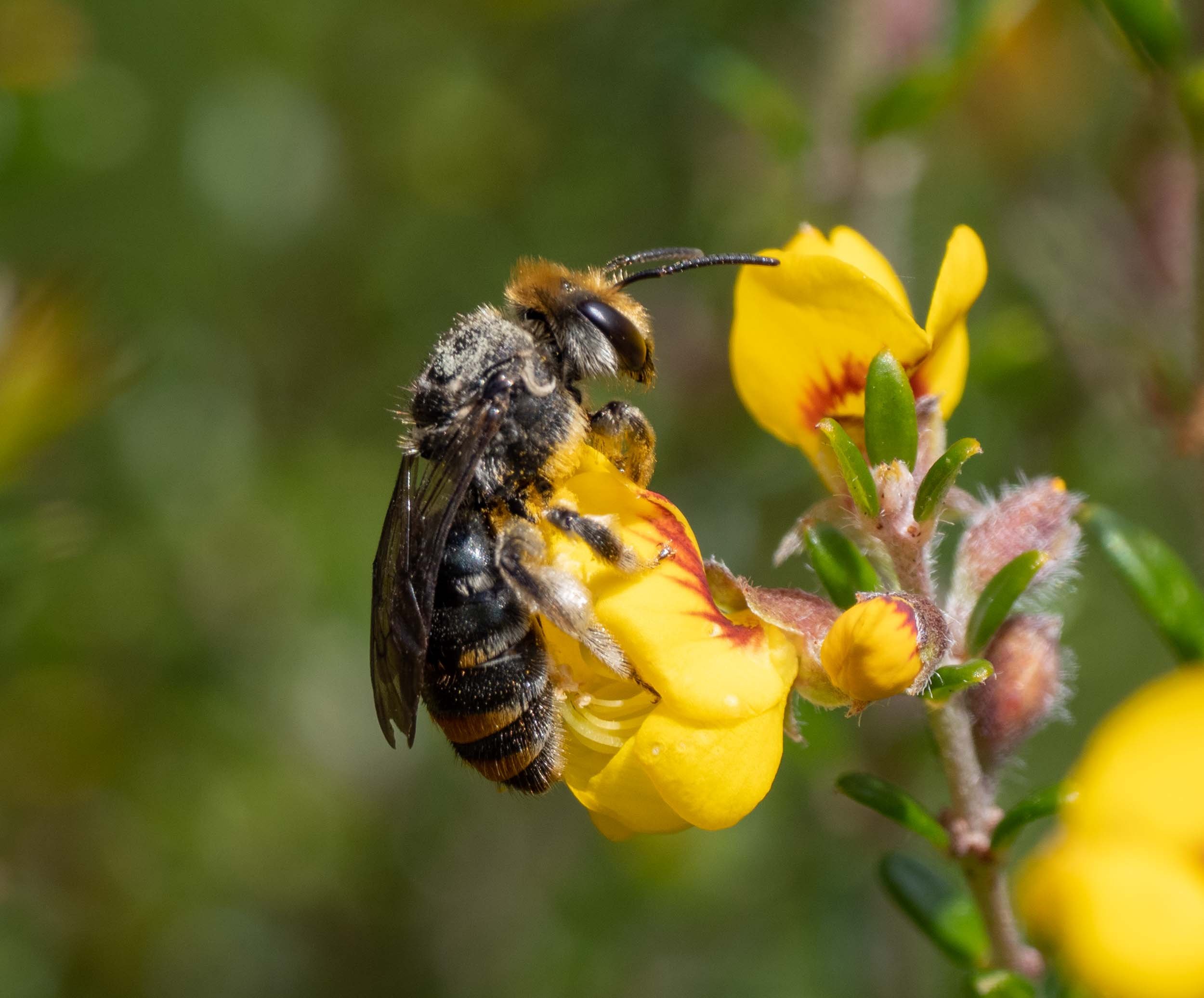
This largish bee is a classic generalist. I’ve photographed Green-and-gold Nomia Bees feeding on: everlasting daisies (family: Asteraceae); Angophora blossom (family: Myrtaceae); Burchardia (family: Colchicaceae); … and peas (family: Fabaceae).
Lipotriches australica (family: Halictidae)
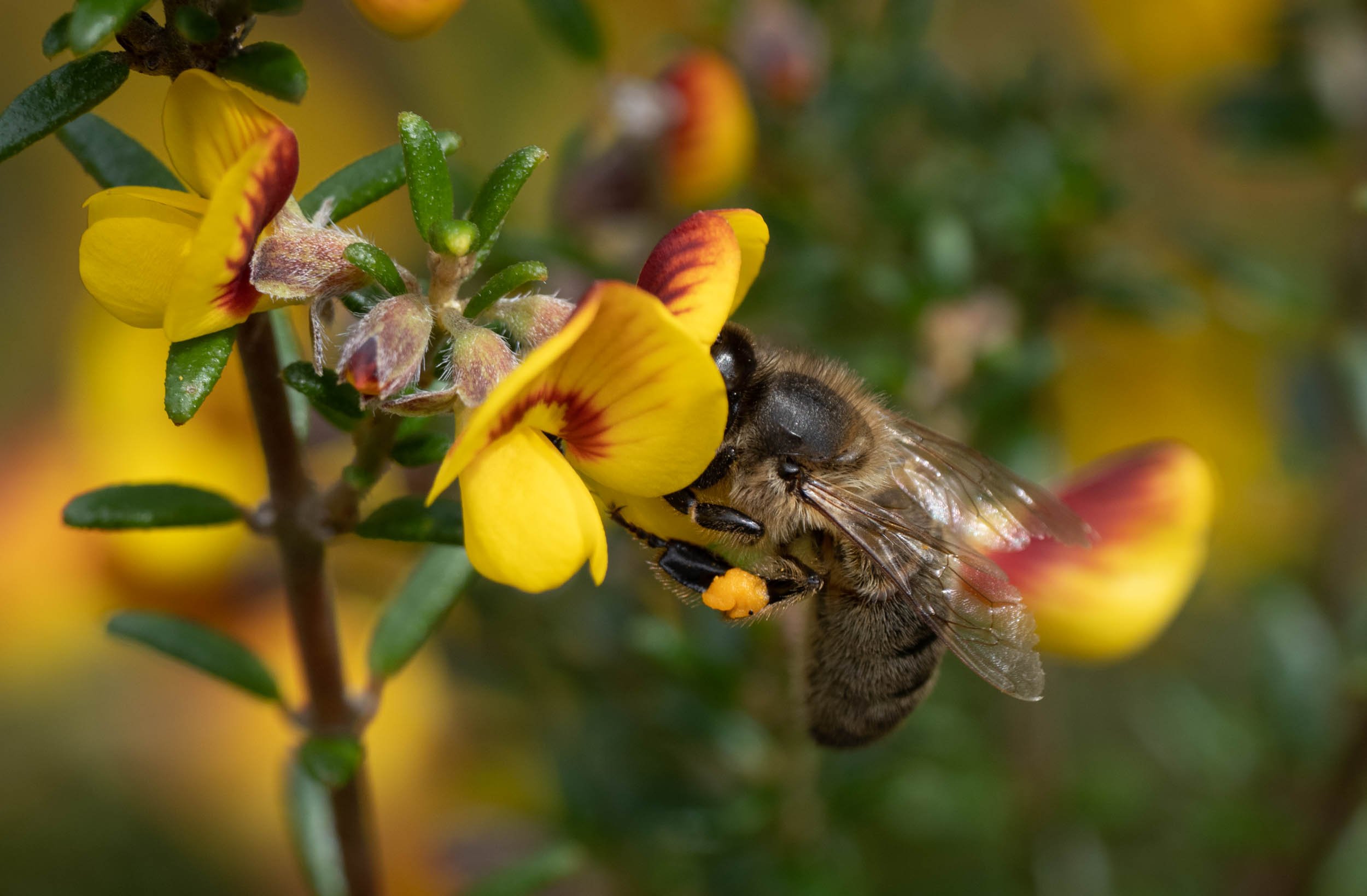
In comparison with most of the local native bees, honey bees are huge – yet they too cling to the front of the flower to access the nectar.
Apis mellifera (family: Apidae) - introduced

Many Australian plants are buzz pollinated, and many generalist native bees can do this – including Lasioglossum, Exoneura and Homalictus. European honey bees, however, cannot.

Upside down and with her body wrapped around the anther bundle, she ‘buzzes’. Floral buzzing involves activation of flight muscles in her thorax to create ‘thoracic oscillation’ … but with her wings kept folded.

The tubular anthers of Tetratheca form a rigid structure. When the bee grips with her legs and buzzes, the mechanical vibrations are transferred from her body to the anthers and pollen grains are shaken loose. The buzzing also produces an audible sound (hence the name), but these sound waves alone do not lead to pollen release.
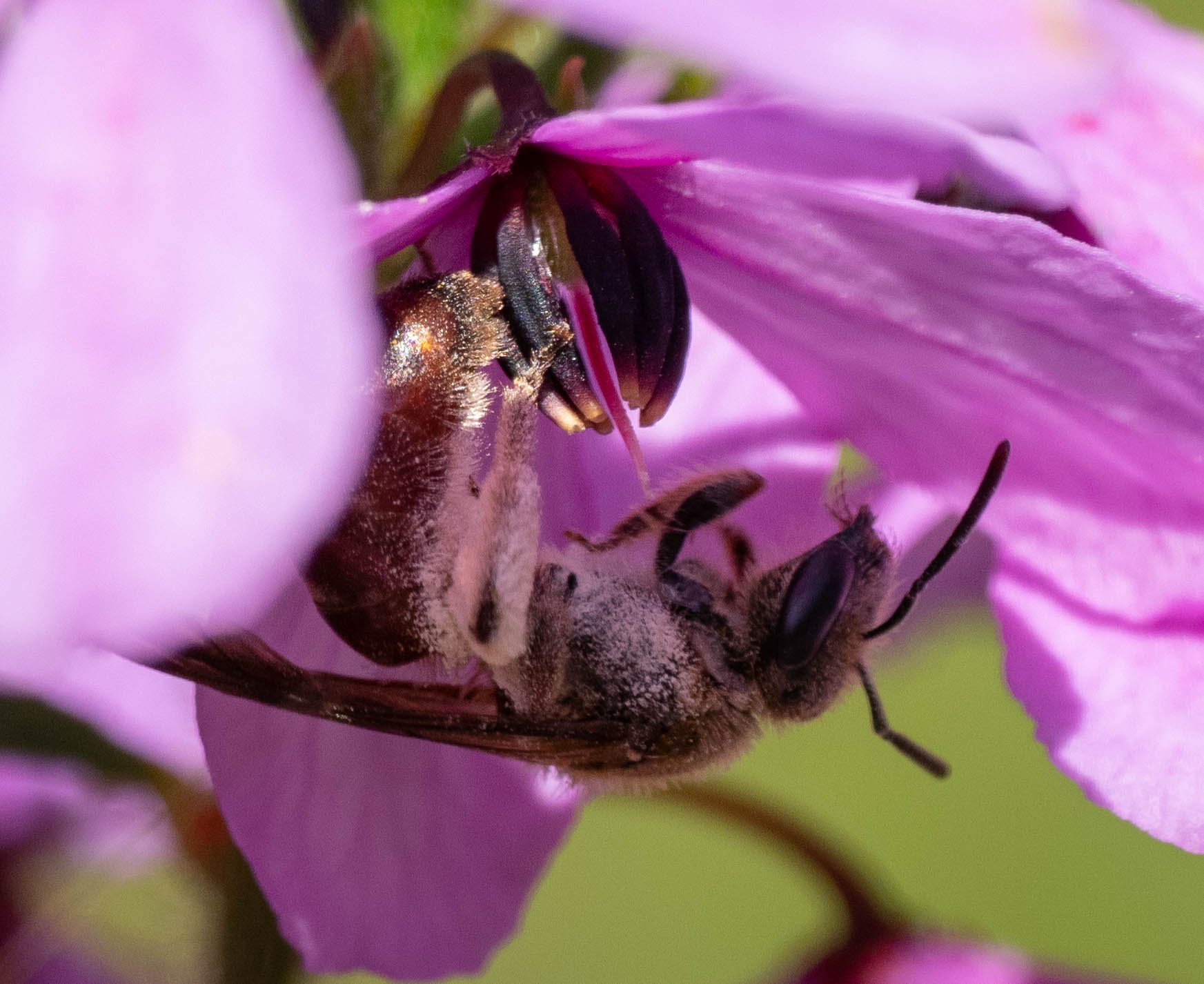
Compared to the flower, she is a reasonably large bee. It has been predicted that the larger the floral structure, the larger the insect required to produce the vibration frequency necessary for pollen release (Vellajo-Marín 2022).

She spent several minutes on this same plant, climbing between flowers, buzzing some but not all. I suspect she was selecting the most suitable flowers … and as the anthers are not visible from above, she must approach each from below.

Same bee, another flower, another buzz. Notice the projecting style pressing the stigma against her pollen-covered body.
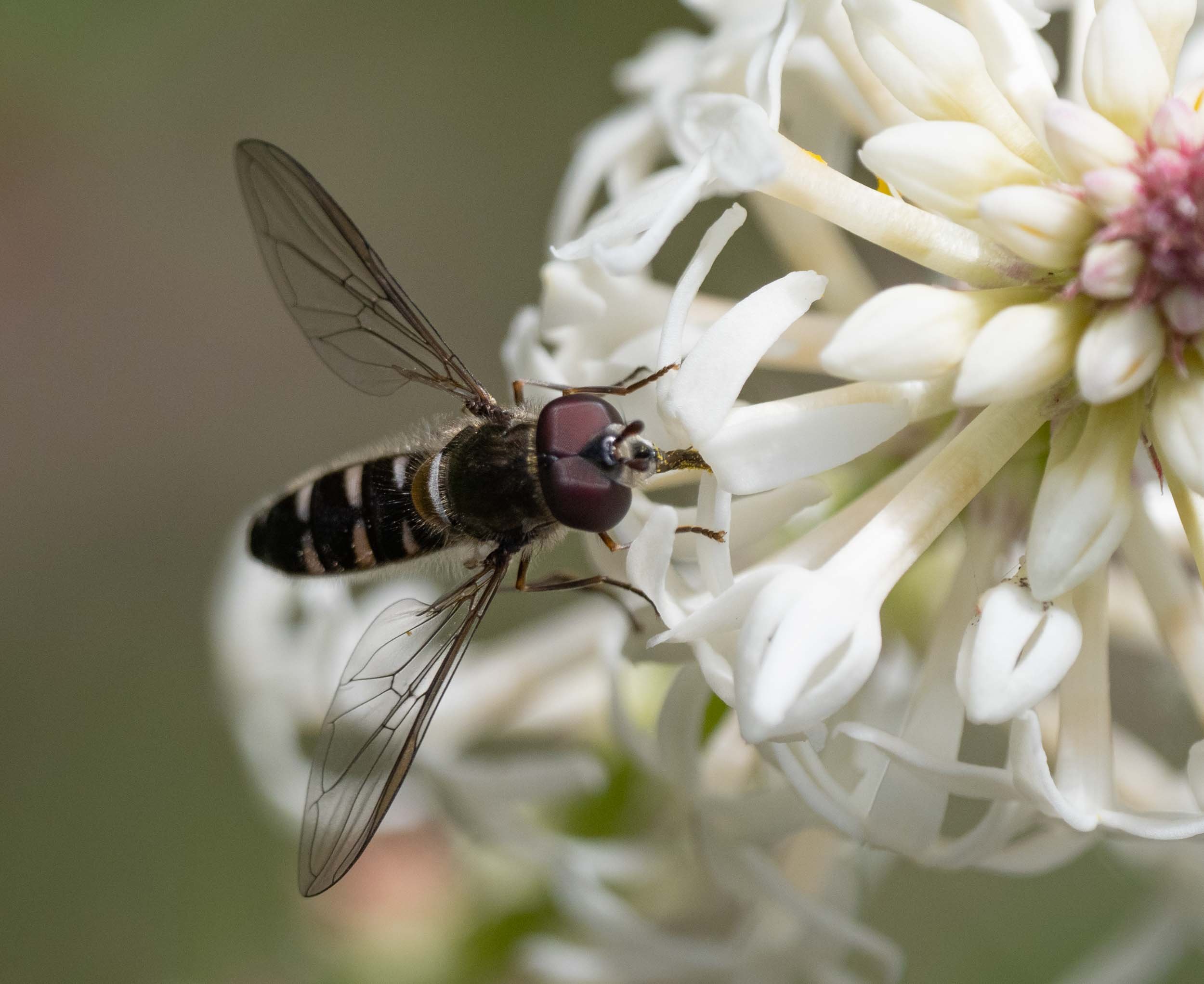
hoverfly
Melangyna sp. (Diptera: Syrphidae)
Mouthparts can reach the outermost anthers only.
(16/10/22 11:50)

flower-feeding fly
(Diptera: Tachinidae ?)
Long mouthparts can reach nectar in many flowers, but not the Stackhousia flowers.
(16/10/22 12:18)

flower-feeding fly
(Diptera: Tachinidae ?)
Trying for the nectar, or feeding on pollen?
(16/10/22 12:19)

butterfly
Pasma tasmanica (Lepidoptera: Hesperiidae)
Clearly nectar-feeding, this butterfly spent several minutes working over the flowers.
(17/10/22 15:34)
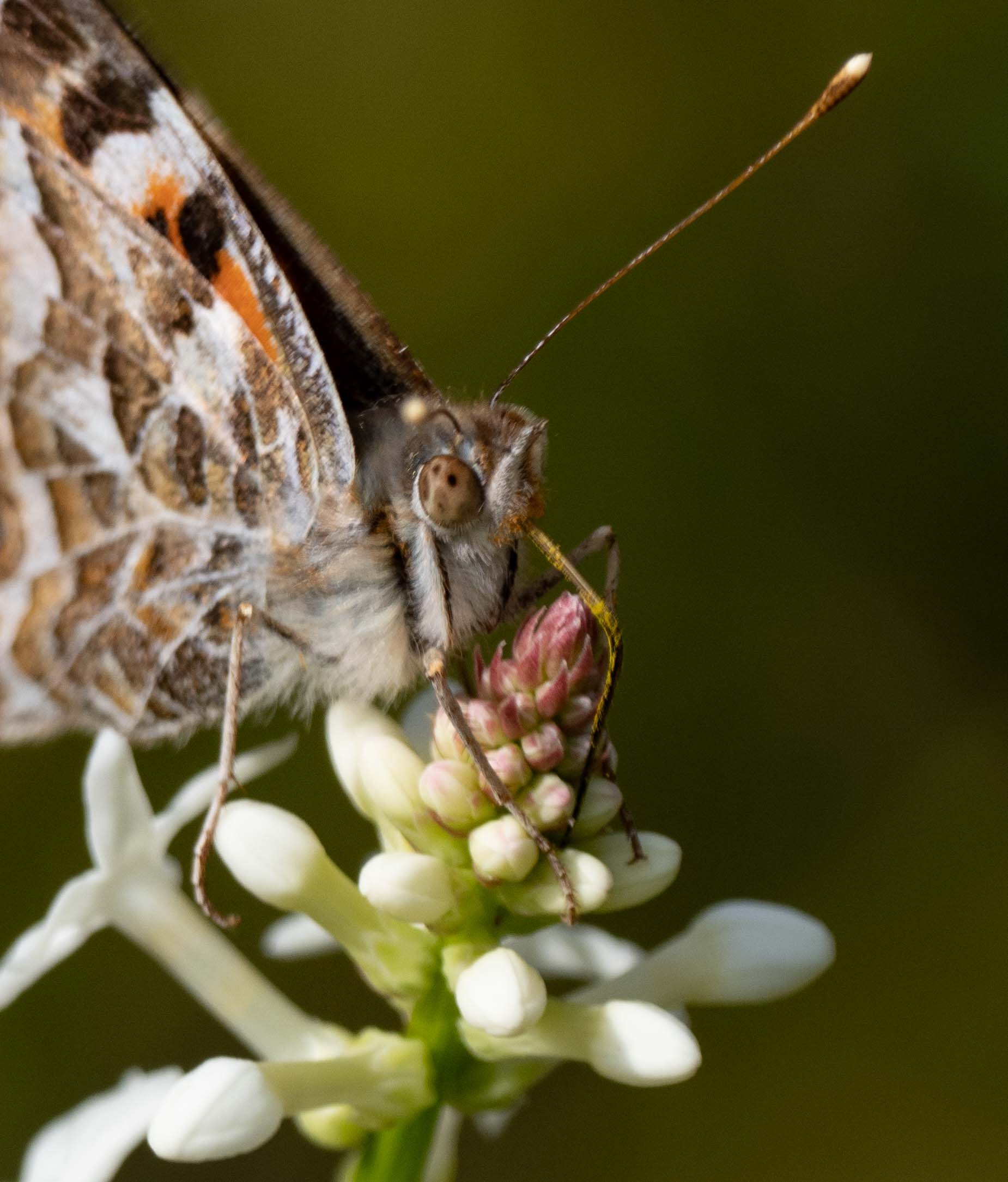
butterfly
Vanessa kershawi (Lepidoptera: Nymphalidae)
Moments before, this butterfly was feeding on a flowering Stackhousia stem alongside the one it rests on here. Note the pollen-covered proboscis.
(18/10/22 15:50)

longhorn beetle
Pempsamacra pygmaea (Coleoptera: Cerambycidae)
Even pressed hard into the flower mouth, the relatively short snout of this species can reach the longest stamens but would not come close to the stigma.
(17/10/22 15:26)
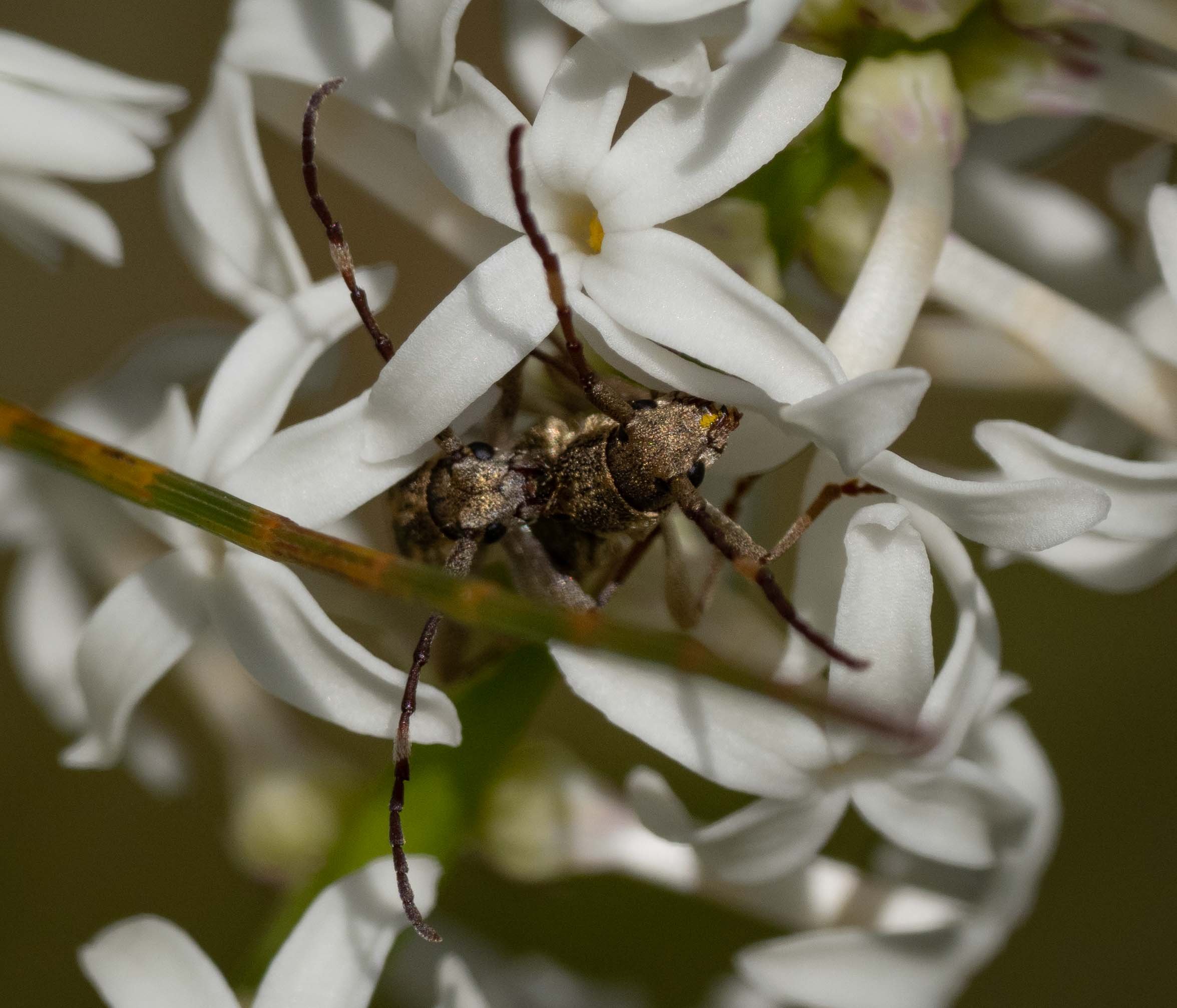
longhorn beetle
Pempsamacra pygmaea (Coleoptera: Cerambycidae)
Five minutes later the female is still clinging to the same flower, her face covered in pollen. The male now clinging to her back has temporarily distracted her from her meal.
(17/10/22 15:31)
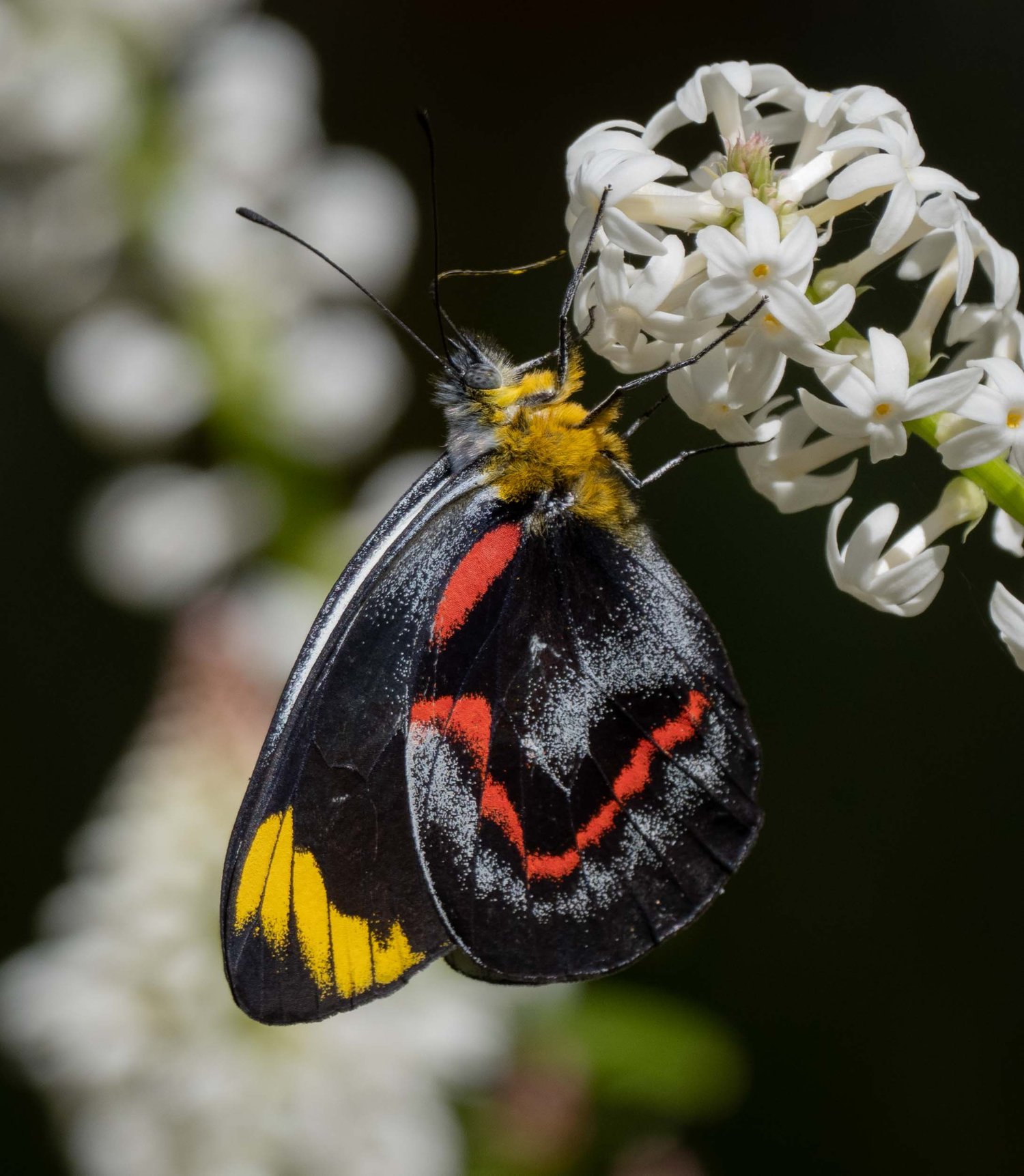
butterfly
Delias nigrina (Lepidoptera: Pieridae)
An uncommon visitor here, as we are at the southernmost extent of its reported range. We rarely see them feeding, but the Stackhousia clearly lures them down from the eucalypt canopy. In fact, most photos I have of this species were taken on Stackhousia flowers.
(30/9/21 12:06)

butterfly
Delias harpalyce (Lepidoptera: Pieridae)
The more common species of this genus here, but still one we rarely see down low … except when the Stackhousia are flowering.
(3/10/21 10:18)
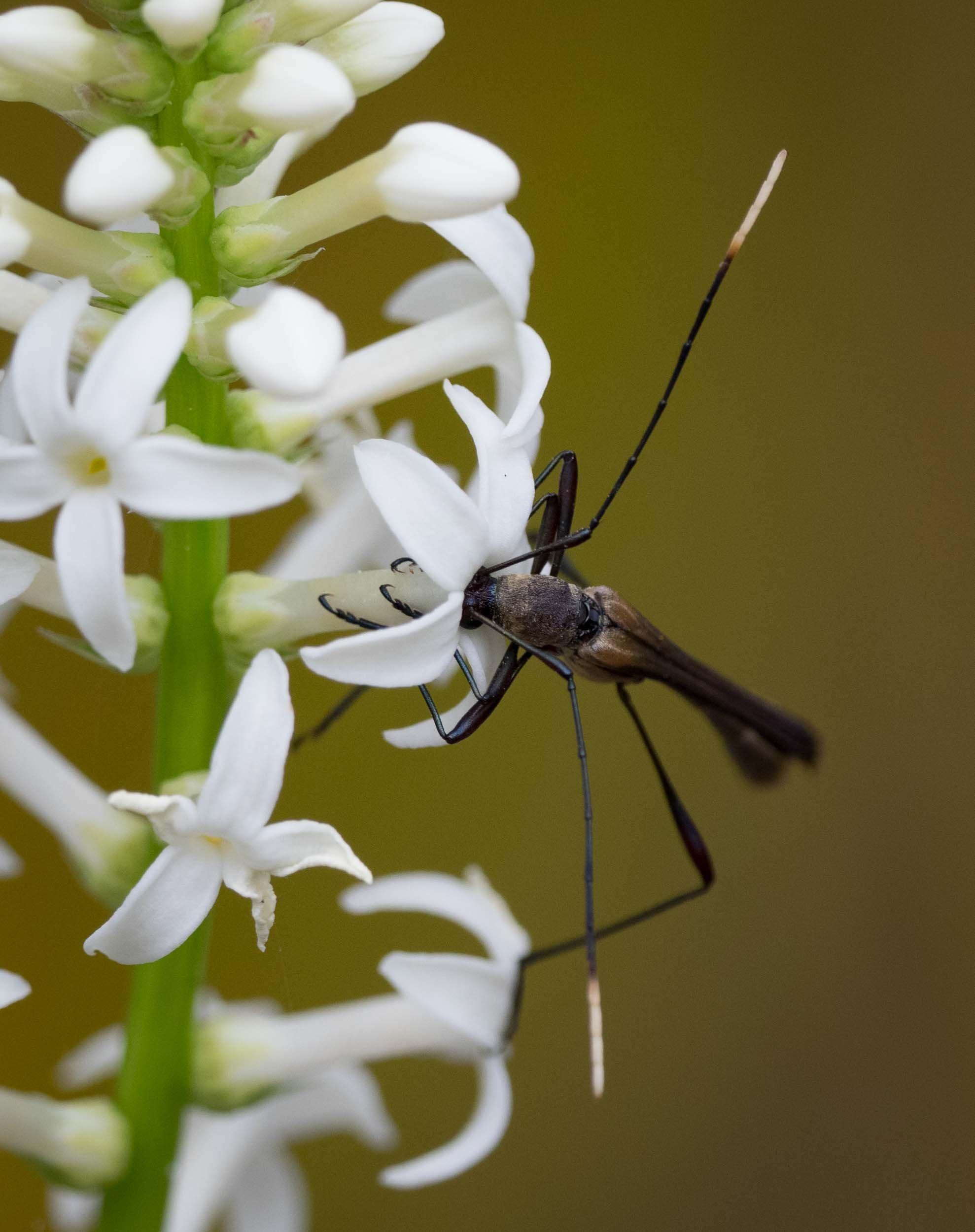
longhorn beetle
Enchoptera apicalis (Coleoptera: Cerambycidae: Cerambycinae)
Many Australian species in this subfamily are flower-feeders as adults, and some are known to act as pollinators (Ślipiński & Escalona 2013). This one spend several minutes moving from flower to flower, burying its face inside the corolla tube each time.
(5/10/17 13:42)

longhorn beetle
Enchoptera apicalis (Coleoptera: Cerambycidae: Cerambycinae)
I doubt it could reach far beyond the outermost anthers. The stigma and nectar would be beyond even this rather elongated face and mouthparts.
(5/10/17 13:43)

day-flying moth
Eutrichopidia latinus (Lepidoptera: Noctuidae)
Clearly nectar-feeding on the Stackhousia, its proboscis (and face) coated with pollen. Although they don’t eat pollen, butterflies can be effective pollinators as they move between flowers.
(21/9/20 13:27)
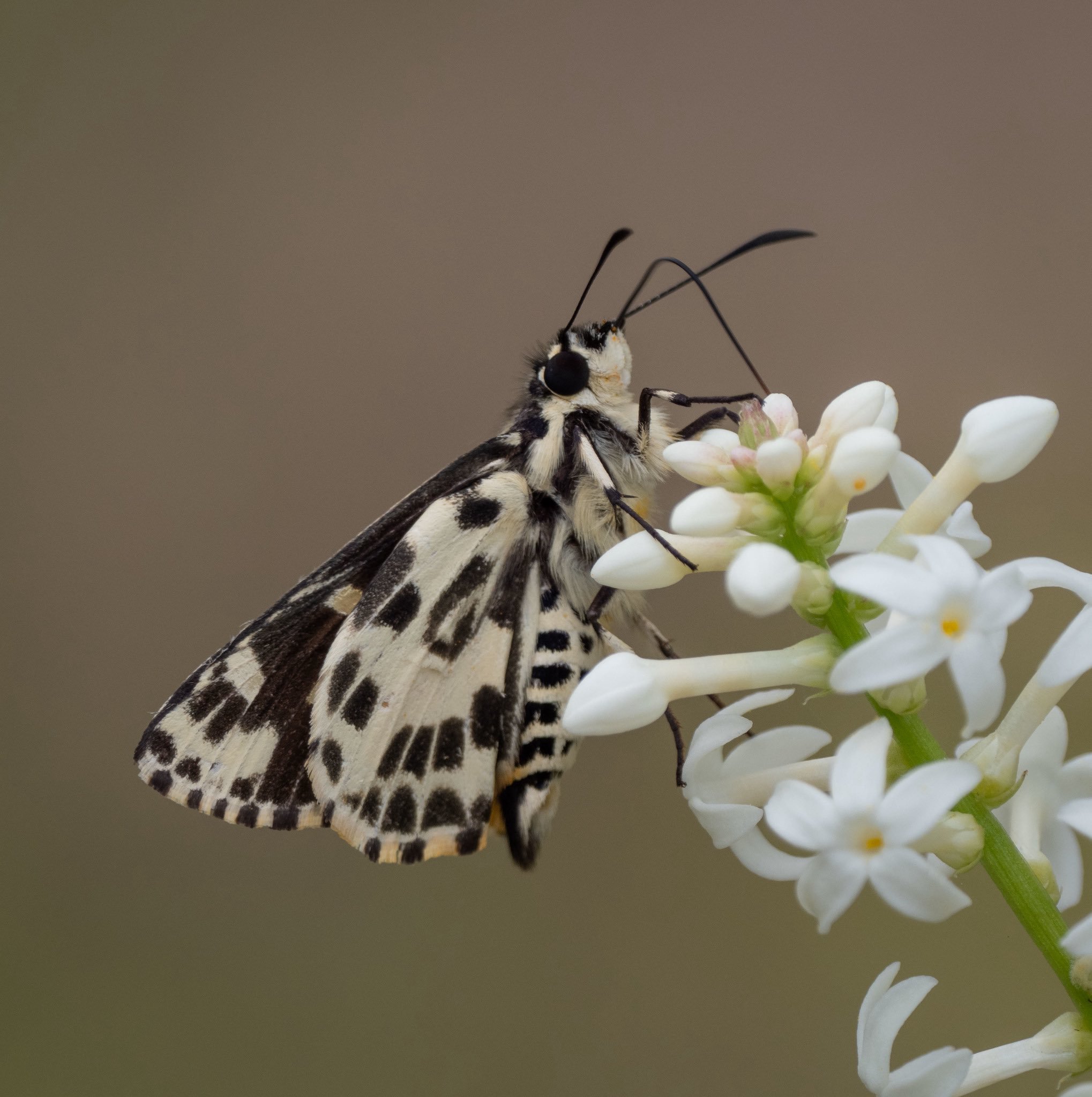
butterfly
Hesperilla ornata (Lepidoptera: Hesperiidae)
Yet another lepidopteran visiting the Stackhousia, apparently probing for nectar … although here among the unopened buds.
(24/11/21 08:54)
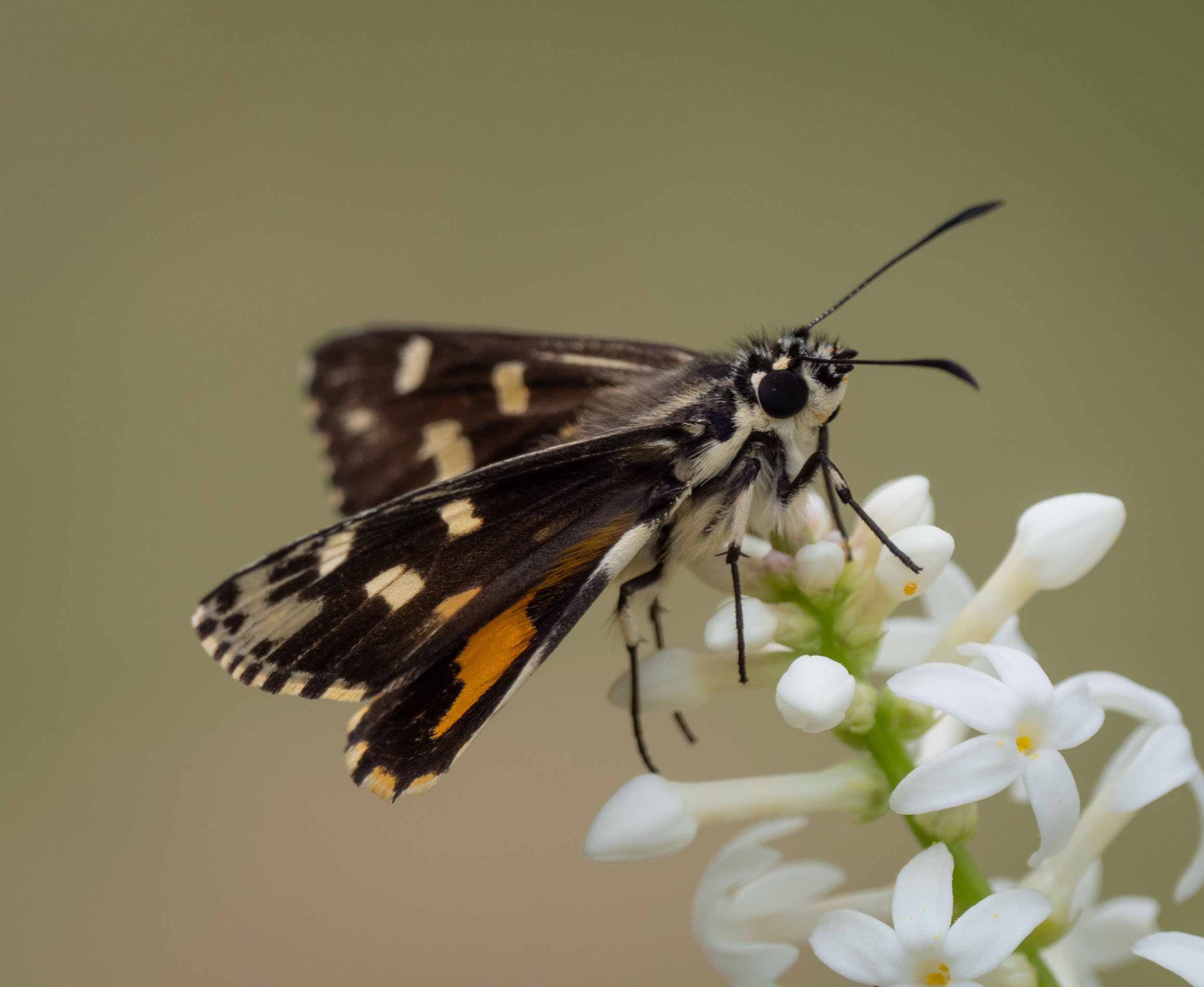
Hesperilla ornata (Lepidoptera: Hesperiidae)
Although much of the time this butterfly was simply perching, the dusting of pollen on the face suggest a recent nectar feed.
(24/11/21 08:57)
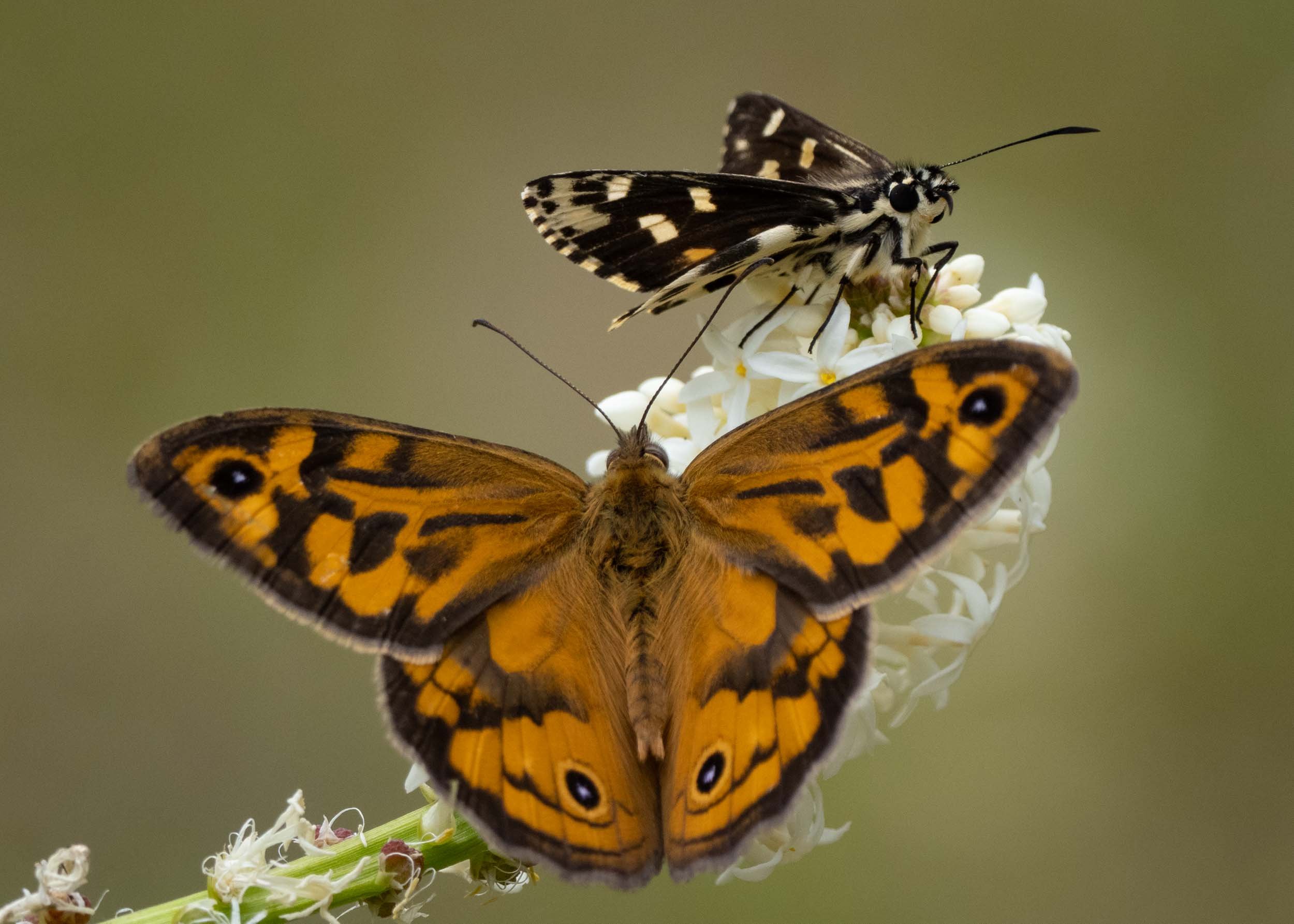
an occasional crowd
Hesperilla ornata (Lepidoptera: Hesperiidae) and Heteronympha merope (Lepidoptera: Nymphalidae)
Very occasionally the flowers get a little crowded … particularly toward the end of the flowering season, by which time there are more butterflies about, and fewer productive flowers to go around.
(24/11/21 08:52)
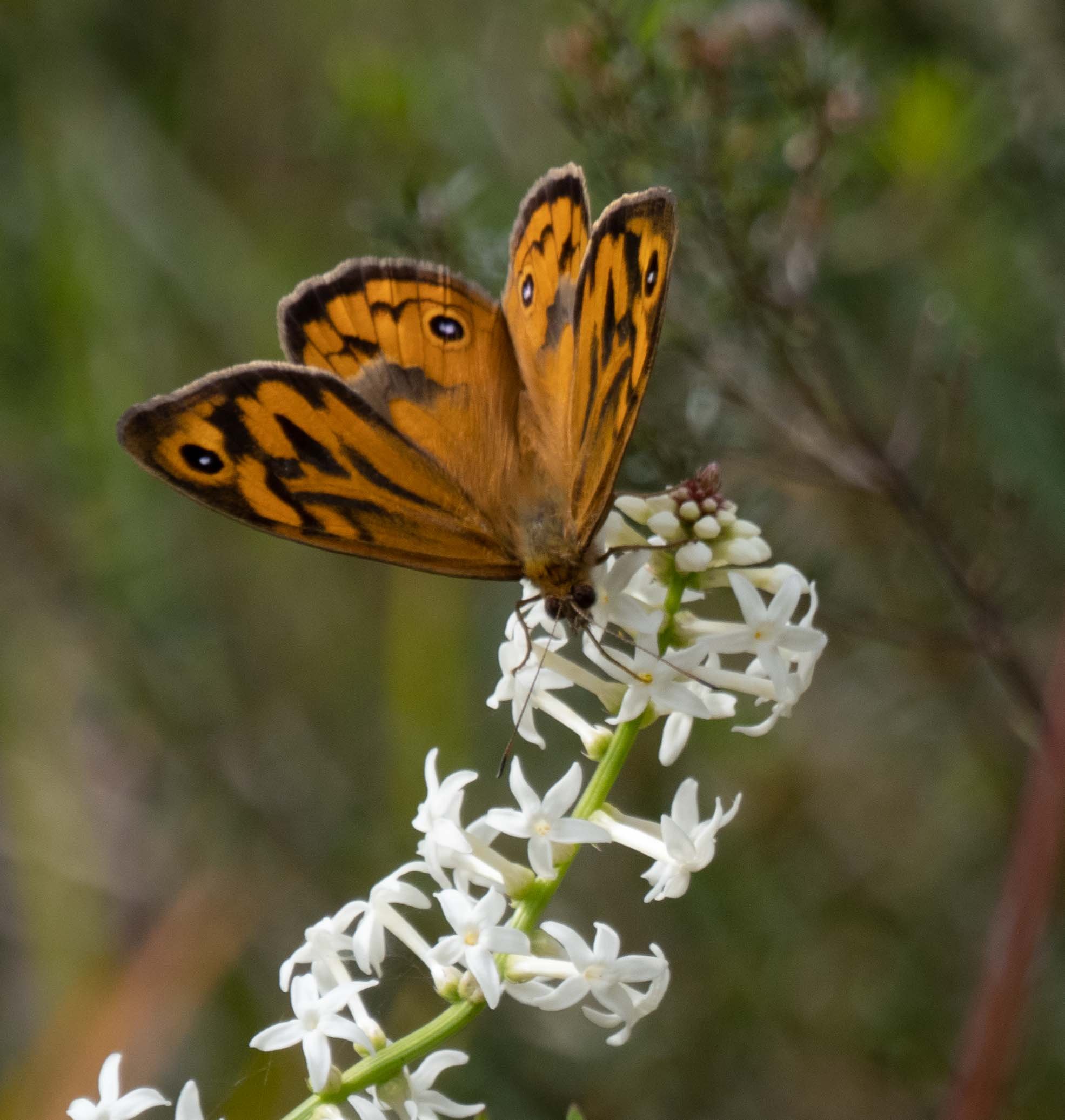
butterfly
Heteronympha merope (Lepidoptera: Nymphalidae)
A nectar-feeding male.
(24/11/21 08:57)
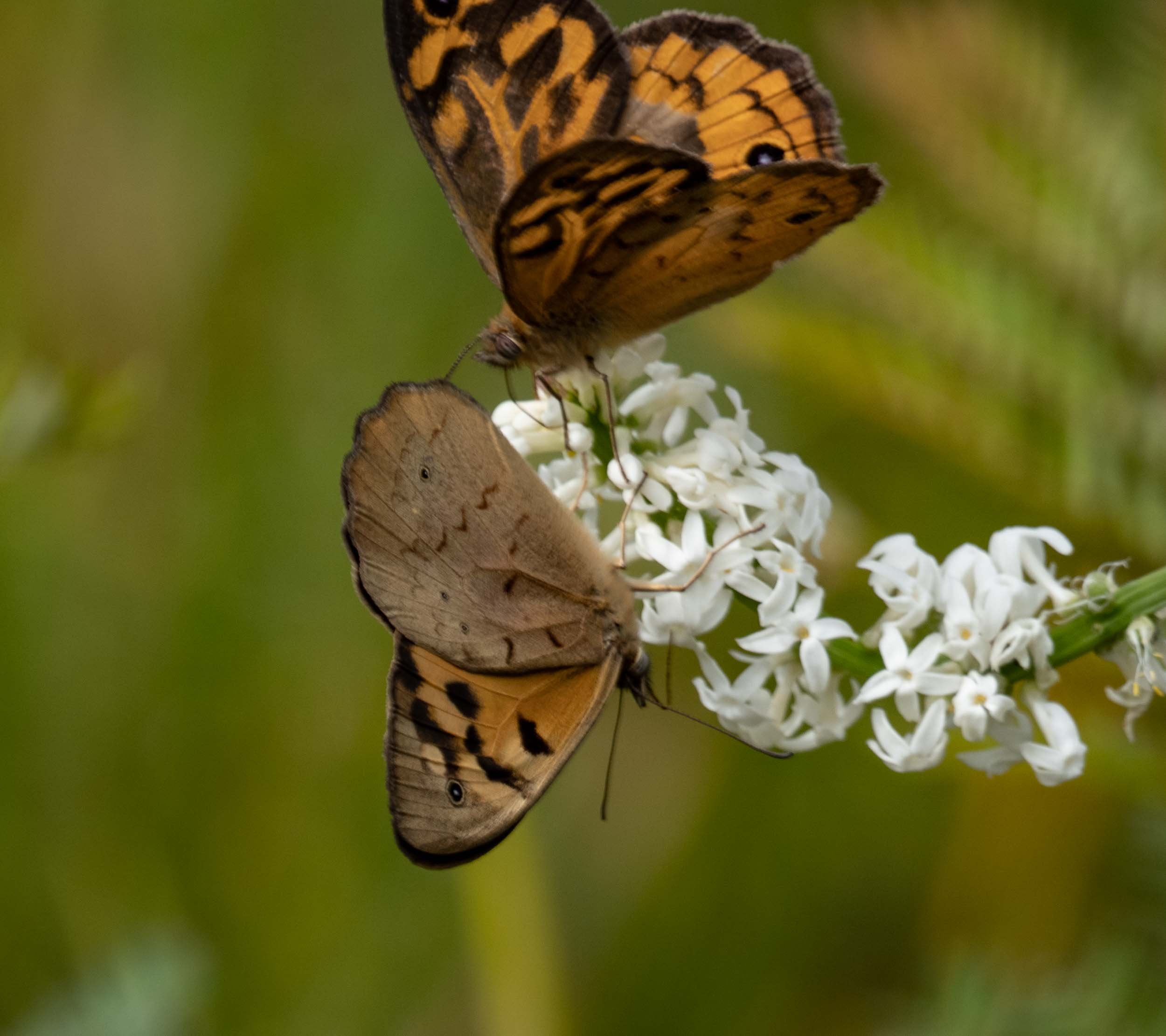
buds or open flowers?
Heteronympha merope (Lepidoptera: Nymphalidae)
A friend recently noted that the butterfly visitors sometimes appear to be probing unopened flowers. Here is another example … the one at the top is among the buds, while the lower one probes inside the tube of a more open flower. It may be they can find a ‘backdoor’ to the nectar of the unopened flowers, but it is likely that the more mature blooms are more productive.
(24/11/21 08:58)

butterfly
Vanessa kershawi (Lepidoptera: Nymphalidae)
This butterfly has just withdrawn its proboscis from the tube of one of the flowers.
(26/9/21 10:30)
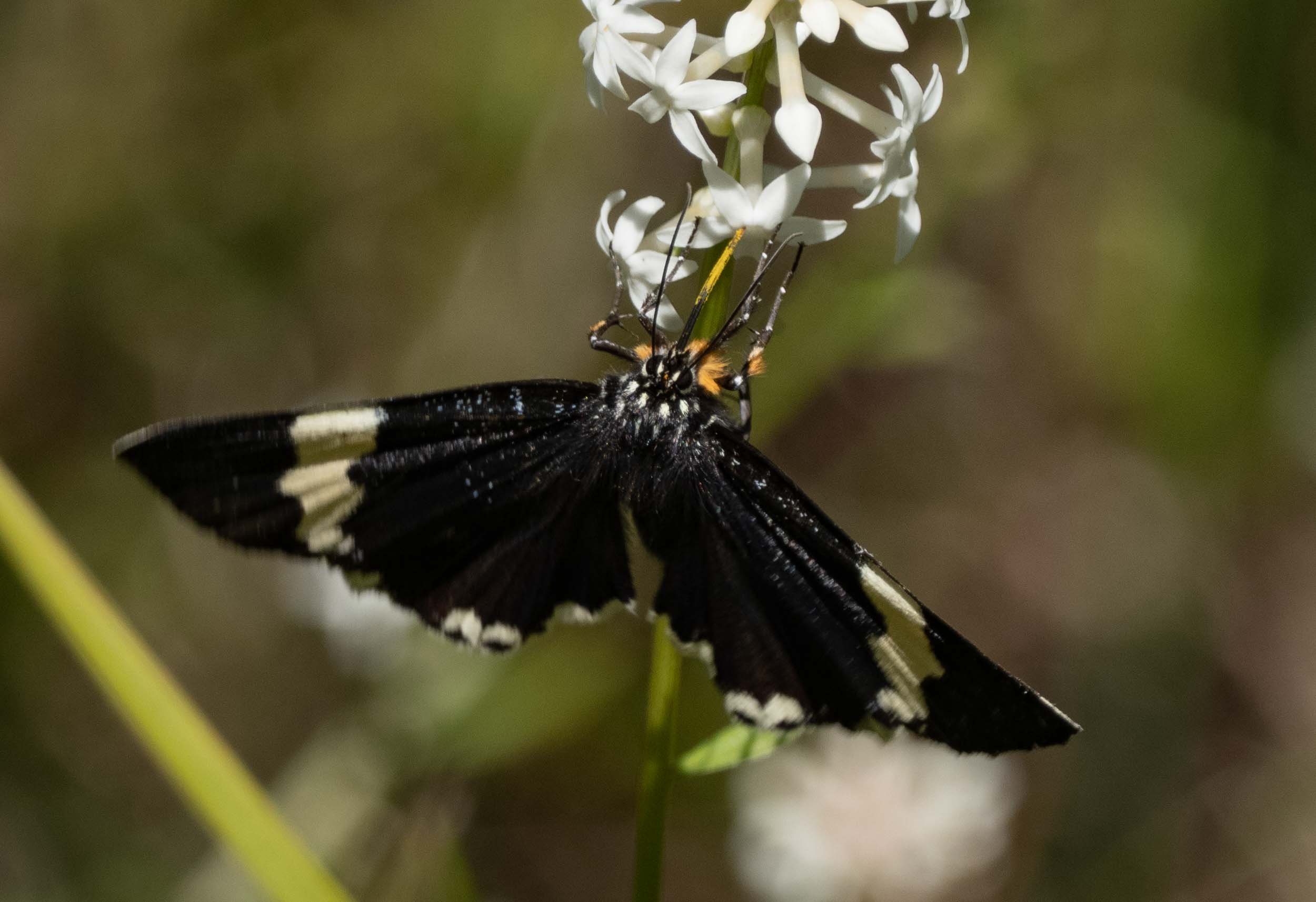
day-flying moth
Eutrichopidia latinus (Lepidoptera: Noctuidae)
… with a pollen-coated proboscis!
(8/11/22 09:30)

































